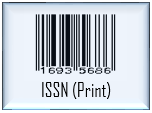Stability Model Prediction Using the Response Surface Approach to Assess the Outcomes of Vitamin B12 Injection Post-Market Sampling
(1) Faculty of Pharmacy, Sanata Dharma University, Campus III Paingan, Maguwoharjo, Depok, Sleman, Yogyakarta 55282, Indonesia
(2) Faculty of Pharmacy, Sanata Dharma University, Campus III Paingan, Maguwoharjo, Depok, Sleman, Yogyakarta 55282, Indonesia
(*) Corresponding Author
Abstract
B12 injections are one of the most widely used vitamins in Indonesia. The nature of vitamin B12, which is easily degraded by environmental factors, has been widely reported. This research aimed to determine the effect of stability optimization model predictions with post-market sampling of vitamin B12 injection preparations by considering the variables of temperature, humidity, and distribution time. Factorial design was used to determine the stability optimization model. Validation of the analysis method using ultraviolet (UV) spectrophotometry showed valid results for testing. Stable product outcomes were seen during the research period based on the results of post-market sampling, optimization of stability conditions by evaluating pH parameters, and content determination. Post-market sampling data showed a pH decrease of 3.46% in the Palembang distribution area and an increase in pH of 4.54% and 5.33% in the Cirebon and Denpasar distribution areas. In the Palembang distribution area, the content of cyanocobalamin decreased by 0.90%, while in the Cirebon distribution area, it decreased by 0.94%. A paired t test for statistical analysis was used to determine the significance of the model. The results obtained show that there was no significant difference between the prediction model and the results of post-market sampling (p-values of 0.065 and 0.491) or H0 received
Keywords
Full Text:
PDFReferences
Bajaj, R.S., Singhal, R.S., 2019. Degradation kinetics of vitamin B12 in model systems at different pH and wxtrapolation to carrot and lime juice. Journal Of Food Engineering, 272(4), 109800.
BMKG, 2023. Analisis Dinamika Atmosfer Dasarian III Juli 2023 [WWW Document]. URL https://www.bmkg.go.id/berita/?p=analisis-dinamika-atmosfer-dasarian-iii-juli-2023&lang=ID&s=detil
Ceribeli, C., Otte, J., Cardoso, D.R., Ahrné L.M. 2023. Kinetics Of Vitamin B12 Thermal Degradation In Cow Milk. Journal Of Food Engeneering, 1116333.
Chandra-Hioe, M.V., Xu,H., Arcot, J. 2020. The Effiiciency Of Ultrasonic-Assited Extraction Of Cyanocobalamin Is Greater Than Heat Extraction. Helion, 6(1), e03059.
Douglas de Brito, Pinola, F.G., Mattoso, L.H.C., Assis, O.B.G.. 2016. Analysis of thermal and aqueous suspension stabilities of chitosan based nanoencapsulated vitamin. Quim Nova, 39(9), 1126–1130.
Hemery, Y.M., Fontan, L., Laillou, A., Jallier, V., Moench-Pfanner, R., Avallone, S., Berger, J. 2020. Influence of storage conditions and packing of fortified wheat flour on microbial load and stability of folate and vitamin B12. Food Chemistry, 5, 100076.
ICH, 2005. Validation of Analytial Procedures: Text and Methodology Q2 (R1). Harmonised Tripartite Guideline, 7–13.
Lee, W., Lee, Y-B., Huh, M.H., Choi, J.K. 2022. Determination of the chemical stability of cyanocobalamin in medical food by a validated immunoaffinity column-linked HPLC method. Journal Of Food Quality, 1–8.
Lie, A.H., Chandra-Hioe, M.V., Arcot, J. 2019. Sorbitol enhances the physicochemical stability of vitamin B12 vitamer. International Journal For Vitamin and Nutrition Research, 50, 5–6.
Monajjemzadeh, F., Ebrahimi, F., Zakeri-Milani, P., Valizadeh, H. 2014. Effect of formulation variables and storage conditions on light protected vitamin B12 mixed parenteral formulations. Advenced Pharmaceutical Bulletin, 4(4), 329–338.
Myers, R.H, Montgomery, D. 2013. Design and Analysis Of Experiments, 8th ed. John Wiley & Sons, United States.
Priyanto, D., 2013. Analisis Korelasi, Regresi dan Multivariate Dengan SPSS. Gava media, Yogyakarta.
Stabler, P.S. 2013. Vitamin B12 deviciency. New England Journal of Medicine, 368(2), 149–160.
Tavakoli, H.R., Naderi, M., Jafari, S.M., Naeli, M.H. 2019. Post Marketing Survilence Of The Oxidative Stability For Cooking Oils, Frying Oils, and Vanaspati Supplied In The Retail Market. Food Science & Nutrition, 7(4), 1455–1465.
USP-NF, 2018. The United States Pharmacopeia and the National Formulary, USP 41-NF 36. Rockville, USA.
Wang, K.Y., Yip, T.L. 2018. Cold-chain system in China and value-chain analysis. Finance and Risk Management For International Logistics and The Supply Chain, 10, 217–241.
Wallach, J.D., Luxkaranayagam, A.T., Dhruva, S.S., Miller, J.E., Ross, J.S. 2019. Post Marketing Commitments For Novel Drugs And Biologics Approved By The US Food Ans Drug Administration: A Cross-Sectional Analysis. BMC Medicine, (17), 117.
Watanabe, F., Bito, T. 2018. Vitamin B12 sources and microbial interaction. Experimental Biology and Medicine, 243, 148–158.
Yamada, K.. Shimodaira, M., Chida, S., Yamada, N., Matsushima, N., Fukuda, M., Yamada, S. 2008. Degradation Of Vitamin B12 In Dietary Supplements. International Journal For Vitamin and Nutrition Research, 78(4-5), 195-203.
DOI: https://doi.org/10.24071/jpsc.007779
Refbacks
- There are currently no refbacks.
Copyright (c) 2024 Jurnal Farmasi Sains dan Komunitas (Journal of Pharmaceutical Sciences and Community)
Jurnal Farmasi Sains dan Komunitas (Journal of Pharmaceutical Sciences and Community)
Published by Faculty of Pharmacy, Universitas Sanata Dharma Yogyakarta

This work is licensed under a Creative Commons Attribution 4.0 International License.













.png)













